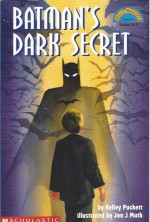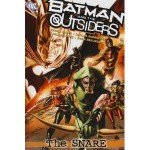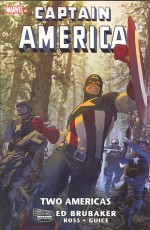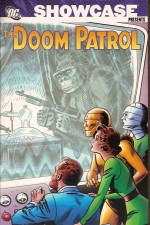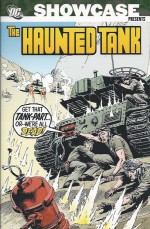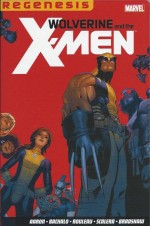
By Jason Aaron, Chris Bachalo, Duncan Rouleau, Matteo Scalera, Nick Bradshaw & others (Marvel/Panini UK)
ISBN: 978-1-84653-513-0
Radical revision – or at least the appearance of such – is a cornerstone of modern comics. There must be a constant changing of the guard, a shifting of scene and milieu and, in latter times, a regular diet of death, resurrection and rebirth. However, with such regular re-fitting, even getting back to basics can be just as new and fresh as completely starting over…
A case in point is this wonderfully fun and frolicsome return to the old days, set immediately after the catastrophic events of X-Men Schism.
What You’ll Need To Know…
When the world’s mutant population was reduced to a couple of hundred desperate souls, most of them banded together in self-imposed exile on Utopia Island in San Francisco Bay, in a defensive enclave led and defended by the X-Men. Although generally welcomed by most of the easygoing residents of the city, tensions were high and leader Cyclops ran the colony in an increasingly draconian and military manner.
His relationship with war-weary second-in-command Wolverine was slowly, inexorably deteriorating as they squabbled over the methods and ideology of the X-nation, each interpreting the idealistic, Cooperative Co-existence dream of Professor Charles Xavier in increasingly different ways…
Matters came to head after Logan refused to train the latest batch of mutant children as warriors, concerned that they were being cheated of their childhoods. Then 16-year old anarchist telepath Quentin Quire – who called himself Kid Omega – provoked a terrified armed response from humanity by disrupting an arms-limitation conference intended to convince Homo Sapiens to abandon their “defensive†anti-mutant weapons – giant robotic Sentinels. All hell broke loose…
With the world once again panicked into insanity and individual nations declaring war on Homo Superior, the assembled mutants and assorted superheroes are kept busy saving humans from their own bellicose paranoid folly, allowing a bunch of very human, sociopathic rich kids to make a lethal power-play against their own parents.
The greedy, remorseless, ambitious and impatient scions of munitions millionaires, human traffickers and deranged scientists had waited too long for what they considered theirs and, after murdering their adult guardians, took over the Hellfire Club to initiate a bold scheme of ruling the Earth before they hit puberty…
Their cynical, vicious plan involved using the threat of mutants to stampede humans into buying the Club’s new, outrageously expensive Super-Sentinels, profiting from death and terror as the wisely wealthy always had…
In a devastating, if brief, war the embattled Utopians become the unwitting target of increasingly bloody attacks and Cyclops and Wolverine catastrophically clashed over the role of the super-powered children in their care, and although Utopia was ultimately saved in the nick of time, the policy-split led to a sundering of the Mutants as Wolverine took many of the youngest kids and some of Cyclops’ oldest, but most disappointed and disaffected, friends to a place where they could attempt to rekindle Xavier’s first endeavour – a school where mutants could live relatively normal lives…
The separation hopefully left Utopia Island as the highly visible fortress against and target for human aggression; populated by warriors and militaristic genocide-survivors ready to take the Race – or perhaps more correctly, Species – War to the oppressors, with the kids allowed to grow up in peace and safety…
Of course it didn’t work out that way…
Following on from the epochal events of X-Men Schism, this utterly engrossing tome (collecting Wolverine and the X-Men #1-7, from 2011) returns to the far lighter, fun-laced thrills of the 1960s Merry Mutants and opens with a 3-part epic in ‘Welcome to the X-Men… Now Die!’
Reluctant and decidedly unsure headmaster Wolverine is getting a much needed pep-talk from Professor X as the new Jean Grey School for Higher Learning opens on the site of the old X-Mansion…
Nervously occupying a daily evolving super-scientific facility, the faculty staff includes the Beast, Iceman, Kitty Pryde, Husk, Cyclops’ telepathic daughter Rachel Grey and other former X-Men, whilst the ever-growing student population comprises a number of earthly mutants old and new and even selected aliens such as a gentle and compassionate Brood and the obnoxious, troublesome, belligerent spoiled-brat heir to the star-spanning Shi’ar.
Admittedly Lord Kubark was only grudgingly accepted in return for past favours and cutting-edge alien tech…
Even as Chief administrator Kitty desperately attempts to convince the local School Board Inspectors that the institution poses no threat to the community or kids, the first crisis erupts as Kade Kilgore, Black King of the pre-pubescent Hellfire Club, launches an attack on the school, which he considers a personal affront to his plans.
Launching an attack by his lab-grown army of Frankenstein’s Monsters, Kade mischievously transforms the inspectors into ravening horrors. With the very land under the establishment turned into a colossal monster determined to eradicate everything above it, things look bleak until Iceman leads the other teachers in a spirited counterattack.
Quire is deemed an “Omega-level threat†by the Avengers, so Wolverine’s plans to turn him into a socialised asset are being closely scrutinised by Captain America, but when Rachel – with the unsuspected aid of Kid Omega – divines that the tectonic assault is being perpetrated by a cloned and brainwashed seed of Krakoa the Living Island (see Marvel Masterworks volume 11) the tide begins to turn…
With a little deft psychic surgery by the arrogant anarchist – for reasons even he can’t really explain – the all-terrain terror becomes the latest addition to the student body and repulses the other attacks after which Wolverine and cameo-star Matt “Daredevil†Murdock retaliate in a way little Kade least expects…
In a tale delightfully depicted by Nick Bradshaw and with the scene firmly set, the tone switches to raucous, action-packed hilarity as the long-suffering faculty come to grips with the unique daily challenges presented by their charges. The cyborg assassin and guest lecturer Deathlok foreshadows horrors to come when he demonstrates his Tachyon vision on the class. Broodling Broo, Shi’ar Student Prince Kid Gladiator and particularly Genesis (a boyish clone of arch-horror Apocalypse) hear predictions that give everyone cause for concern…
Meanwhile, another First-Class X-Man returns to the fold; but Warren Worthington is not the Angel of old and gives old friends Iceman and the Beast extreme cause for concern…
Of course the one with most cause for concern is celibate headmistress Kitty Pryde who went to bed with a headache and woke up eight months pregnant…
Trouble is mounting and the school is close to bankruptcy. Desperate for funds, Wolverine takes Kid Omega to an alien gambling station in a dubious ploy to win billions through Quire’s psionic abilities, whilst at the school the Beast diagnoses the true cause of Kitty’s condition. Somehow she’s been infected by a horde of microscopic Brood (the real, ghastly, voracious body-stealing, egg-implanting cosmic horror kind utterly unlike the erudite, genteel freak Broo), and after the headstrong Kid Gladiator invades her body via shrinking technology, the Beast has no choice but to follow, leading a determined team of students on a Fantastic Voyage into the Headmistress’ bloodstream…
Meanwhile, in space a deadly alien hunter who uses Brood as hunting dogs is hurtling towards Earth and the School…
On Planet Sin, Wolverine and Quentin are making millions but have underestimated the casino owners’ ingenuity and determination to discourage cheating, whilst within Kitty’s circulatory system, the mutants’ school field trip is slowly eradicating the micro-Brood infestation. However, when full-sized Brood-warriors invade the School, young Broo and Kitty are forced into a deadly game of cat-and-mouse simply to survive before über-alien Xanto Starblood reveals himself as the cause of all their woes…
An Extreme Xeno-Zoolologist, Starblood’s entire universe-view is offended by the existence of a benign Broodling and he’s taken drastic measures to correct the Cosmos’ mistake, but even as the micro-students finish cleaning up Kitty’s small parasite problem Broo, pushed to far, suddenly proves to the alien academic that he’s not that far removed from his mercilessly marauding forebears…
And in deep space, Quire pilots the ship back from Planet Sin. He and Wolverine have escaped the Gambler’s wrath… but hardly intact…
Fast, furious, funny and fulfilling, the whole splendid affair was scripted by the wickedly sharp Jason Aaron, illustrated by Chris Bachalo, Duncan Rouleau, Matteo Scalera and Nick Bradshaw with additional inking from Jaime Mendoza, Tim Townsend, Al Vey, Mark Irwin, Victor Olazaba, Walden Wong, Norman Lee, Jay Leisten & Cam Smith. As always there’s a glorious gallery of covers and variants from the likes of Bachalo, Townsend, Bradshaw, Frank Cho, Ed McGuinness and Mark Brooks.
If you crave full-on, uncomplicated yet witty and rewarding Fights ‘n’ Tights fiction this is another near-perfect one-stop shop for your edification and delectation.
™ & © 2011, 2012 Marvel and subs. Licensed by Marvel Characters B.V. through Panini S.p.A, Italy. All Rights Reserved. A British edition published by Panini UK, Ltd.


